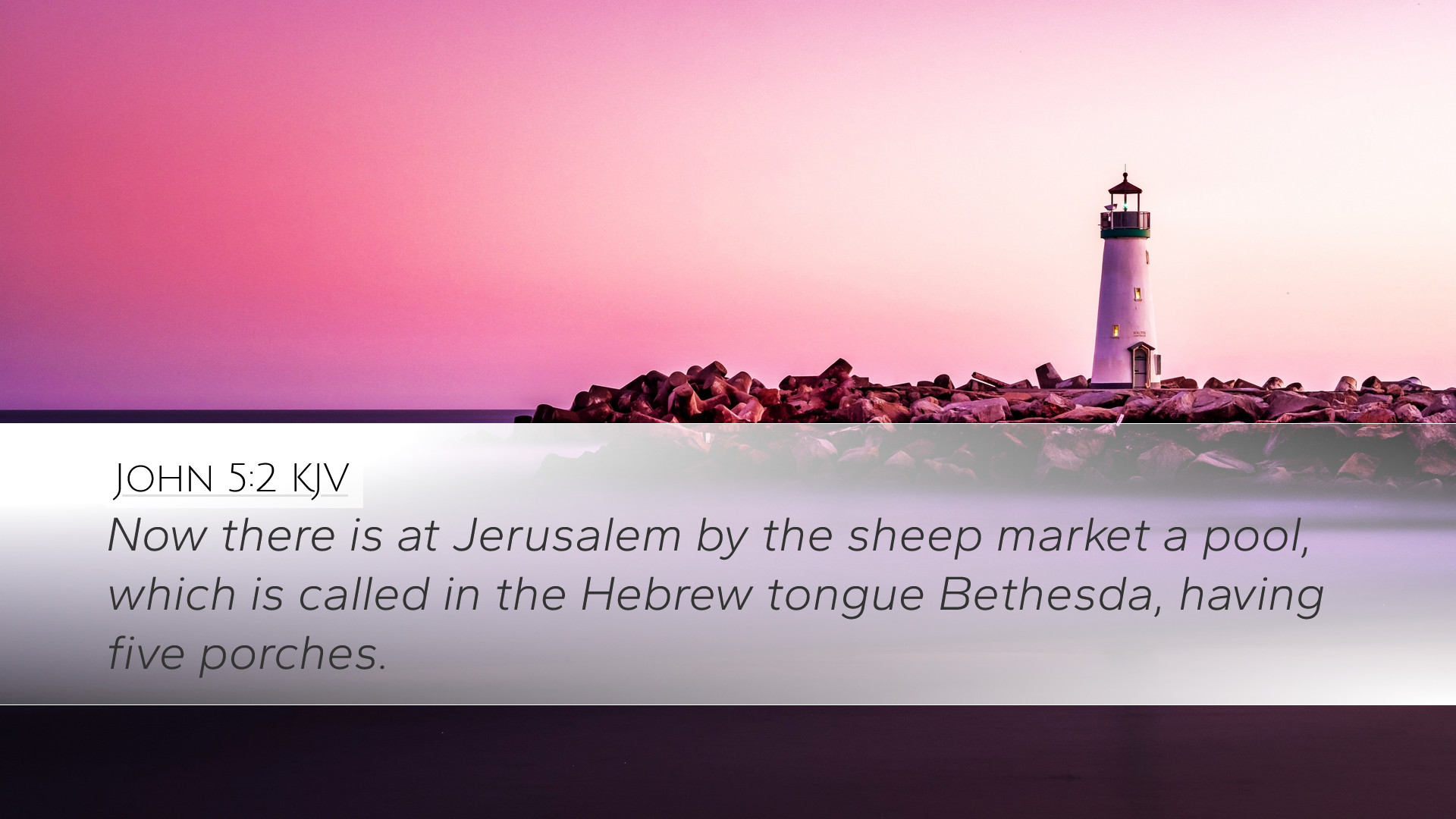Commentary on John 5:2
Verse Context: In John 5:2, we are introduced to a significant location: Bethesda, a pool with five porches, noted for its healing powers. This verse sets the stage for one of the most profound miracles in the Gospel of John, where Jesus heals a man who had been invalid for 38 years.
Historical and Geographical Insights
Albert Barnes notes that Bethesda may be translated as "house of mercy," indicating a place rich in hope for those suffering from various ailments.
This pool was believed to have healing properties, with waters that were stirred by an angel, suggesting a divine activity and expectation from those gathered there.
Symbolism of Bethesda
- Place of Hope: The pool represents a place where the sick and weary come in search of physical and spiritual healing.
- Stagnation and Despair: The gathered multitude reflects human conditions of stagnation and need. Many remained waiting and disappointed, reminiscent of a world that often remains unhealed from its ailments.
Theological Reflections
Matthew Henry observes that the number five in the structure of the porches may symbolize the Law (the Pentateuch). The symbolism suggests that while the Law provided a way to understand sin, it could not bring true healing—only Christ could fulfill that need.
Adam Clarke emphasizes that the Gospel of John often unveils Jesus’s supremacy over the rituals and symbols of Jewish tradition. The healing at the pool challenges the reliance on ritual, demonstrating that Christ, not the water, brings healing.
Human Condition and Divine Intervention
From this verse, we can derive a profound understanding of the human condition. The gathered individuals at the pool symbolize humanity waiting for something—healing, redemption, or hope:
- Spiritual Paralysis: The physical waiting mirrors our spiritual waiting; many search for meaning and healing in life but often remain unchanged.
- Jesus as the Answer: The subsequent verses illustrate that while people wait for the stirring of the water, Jesus, the true source of healing, approaches the man who had been waiting in despair.
Lessons for Faith Communities
Pastors and theologians should reflect on the implications of this narrative for faith communities today:
- The Role of Community: Bethesda serves as a reminder of the communal nature of our struggles. Individuals often wait together, reinforcing the need for church communities to support those who are spiritually or physically unwell.
- The Call for Action: Christ’s interaction with the invalid encourages believers to act rather than wait passively for divine intervention. When faced with suffering, action, prompted by faith, is critical.
Conclusion
John 5:2 is not merely a description of a physical location but a rich tapestry of human experience, faith, and divine promise. As Matthew Henry points out, the waiting period is crucial—it is often through these times of expectation that our deepest understanding of faith and healing is cultivated. In the context of spiritual lessons, the healing of the invalid serves to illustrate Jesus's authority over affliction and His compassion toward those who suffer.
Therefore, as we study this verse, let us remember the broader narrative of the Gospel—it is a call to action, a message of hope, and an invitation to encounter the Divine Healer amidst our waiting and longing.


